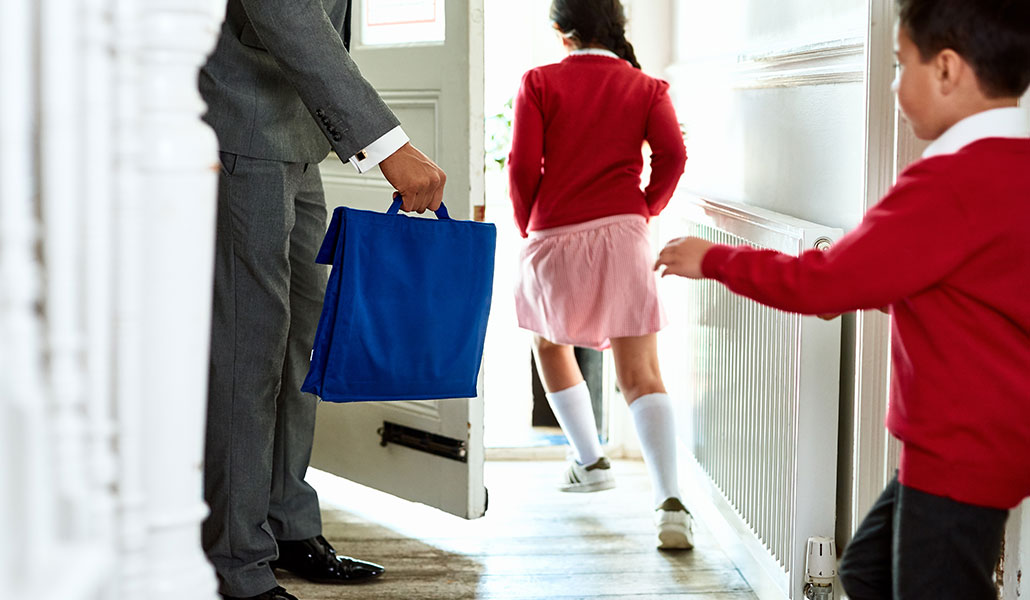8 Ways to Help Your Child Adjust to Your Return to the Office

After an extended period of remote work, transitioning back to the office can feel like a significant shift for both you and your child. It may take time for your child to adjust to the new routine, and there may even be tears or anxiety at first. However, with patience, reassurance, and consistency, you can help make the transition easier for both of you.
Here are five strategies to help build your child’s confidence and navigate this change.
1. Discuss the changes early and often
Prepare your child for the upcoming changes by calmly discussing the practicalities of returning to the office. Children often appreciate details, so explaining things in simple and reassuring language at an appropriate level for their understanding will help them feel at ease.
Reassure your child that the separation is only temporary, keeping in mind that young children don’t fully understand the concept of time. Instead of saying “soon” or “later,” give them a clear and familiar reference point, such as “I’ll be back after school,” “after tea,” or “just before supper.”
Talk to your child about their own routine, where they’ll be, who’ll be looking after them, and which friends they might be seeing. This can help them feel more secure and prepared for the day ahead. Reassure them that you still love them and will spend quality time together once you’re back.
For younger children, there are many books that can help demystify the changes in a relatable way. For older children, you can explain that your return to work is a positive step to provide for the family and give tangible examples of a family goal you're working toward.
2. Short separations
If possible, ease your child into the transition by gradually introducing short periods of separation before your return to the office. This could mean arranging settling-in sessions at a nursery or leaving them with a trusted caregiver or family member for a few hours at a time. These brief separations will help build their confidence in being apart from you.
3. Establish a routine
Consistency is key in helping children feel secure. Establishing a well-structured routine for mornings and evenings will give your child a sense of stability and predictability, which can significantly reduce anxiety.
Where possible, create a simple yet meaningful ritual, such as brushing teeth together in the morning (also great for role modelling!), sharing a favourite snack if you share a commute, reading a book together, or even just having a special chair where you can cuddle and talk about each other’s day.
4. Make goodbyes short and sweet
Lingering goodbyes can sometimes increase anxiety. Instead, develop a quick and consistent goodbye ritual—whether it’s a special handshake, a hug, or a reassuring phrase like “See you after school, love you!”—and stick to it. This helps signal that departures are a normal part of the day.
5. Spend quality time together
Quality time doesn’t need to be lengthy; it's the small, meaningful moments that count. Small gestures can really make a big difference in helping your child feel loved, secure, and comforted.
During conversations, ensure you are actively listening. Consider asking interesting questions that go beyond "How was your day?" For example, "Who made you laugh today?" or "What was the most surprising thing you learned today?" This can help ensure your child feels truly heard and supported, encouraging them to openly express their feelings and concerns.
You can also give your child something to look forward to by planning enjoyable weekend activities together. Whether it’s a visit to the park, a movie night, or baking cookies, these bonding moments reassure them that quality time is still a priority.
6. Acknowledge their feelings
It’s important to both validate your child’s feelings and offer reassurance. Let them know that their emotions - whether sadness, anxiety, or frustration - are valid, and encourage open conversations in a safe, supportive environment where they can freely express themselves. Reassure them that, as with all changes in life, it’s okay to feel a mix of emotions and that you’re always there to listen.
At the same time, recognise and praise their resilience, bravery, and adaptability. By acknowledging their efforts and expressing appreciation for how they’re handling changes, you help reinforce their confidence and ensure they feel valued.
Here are some reassuring phrases that validate their feelings while offering comfort:
- “I can see that you’re feeling a little nervous about me going to work. It’s okay to feel that way.”
- “I understand you miss me, and I miss you too. I look forward to spending time with you when I come back.”
- “I’m really proud of you for talking to me about how you’re feeling.”
- “I know it’s hard when things change, but you are doing such a great job adjusting.”
- “I really appreciate how you’re trying to be brave, and I’m always here to listen if you want to talk.”
7. Stay connected throughout the day
Depending on your child’s age and character, small check-ins may help ease anxiety. A note in their lunchbox can reassure them that you’re thinking of them even when you’re away. Alternatively, ensure they have a familiar item with them, like a favourite stuffed toy, a small family photo, or a special bracelet. These can provide comfort and remind your child of your connection throughout the day.
8. Speak to caregivers and teachers
Speaking to your child’s key person at nursery or teacher at school will help ensure they are aware of your child’s situation and can provide extra support as they adjust to the transition.
Just like any adult, children will need time to get used to new routines. It may not all be smooth sailing at first, but with time and patience from their family and key people, they will learn that they still feel safe and loved within their new routine.